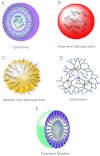Therapeutic siRNA: principles, challenges, and strategies
- PMID: 22737048
- PMCID: PMC3375670
Therapeutic siRNA: principles, challenges, and strategies
Abstract
RNA interference (RNAi) is a remarkable endogenous regulatory pathway that can bring about sequence-specific gene silencing. If harnessed effectively, RNAi could result in a potent targeted therapeutic modality with applications ranging from viral diseases to cancer. The major barrier to realizing the full medicinal potential of RNAi is the difficulty of delivering effector molecules, such as small interfering RNAs (siRNAs), in vivo. An effective delivery strategy for siRNAs must address limitations that include poor stability and non-targeted biodistribution, while protecting against the stimulation of an undesirable innate immune response. The design of such a system requires rigorous understanding of all mechanisms involved. This article reviews the mechanistic principles of RNA interference, its potential, the greatest challenges for use in biomedical applications, and some of the work that has been done toward engineering delivery systems that overcome some of the hurdles facing siRNA-based therapeutics.
Keywords: RNA interference; chemical modification; delivery; liposome; nanoparticle; siRNA; targeting; therapeutics.
Figures




References
-
- Fire A, Xu S, Montgomery MK, Kostas SK, Driver SE, Mello CC. Potent and specific genetic interference by double-stranded RNA in Caenorhabditis elegans. Nature. 1998;391(6669):806–811. - PubMed
-
- Hamilton AJ, Baulcombe DC. A species of small antisense RNA in posttranscriptional gene silencing in plants. Science. 1999;286(5441):950–952. - PubMed
-
- Zamore PD, Tuschl T, Sharp PA, Bartel DP. RNAi: double-stranded RNA directs the ATP-dependent cleavage of mRNA at 21 to 23 nucleotide intervals. Cell. 2000;101(1):25–33. - PubMed
-
- Hammond SM, Bernstein E, Beach D, Hannon GJ. An RNA-directed nuclease mediates post-transcriptional gene silencing in Drosophila cells. Nature. 2000;404(6775):293–296. - PubMed
-
- Elbashir SM, Harborth J, Lendeckel W, Yalcin A, Weber K, Tuschl T. Duplexes of 21-nucleotide RNAs mediate RNA interference in cultured mammalian cells. Nature. 2001;411(6836):494–498. - PubMed
Publication types
MeSH terms
Substances
LinkOut - more resources
Full Text Sources
Other Literature Sources
